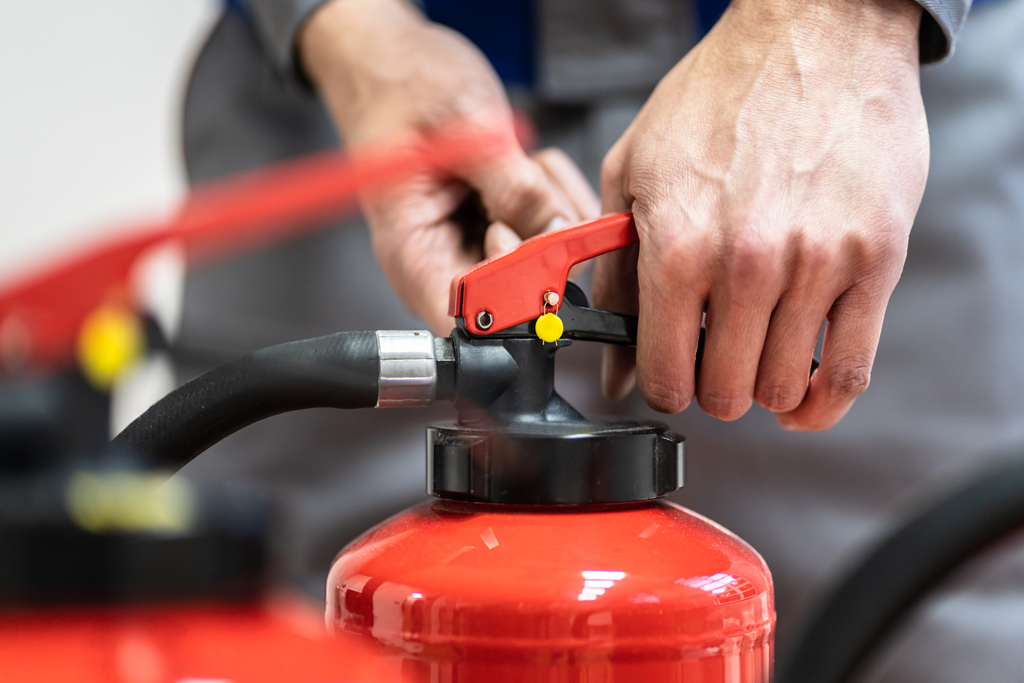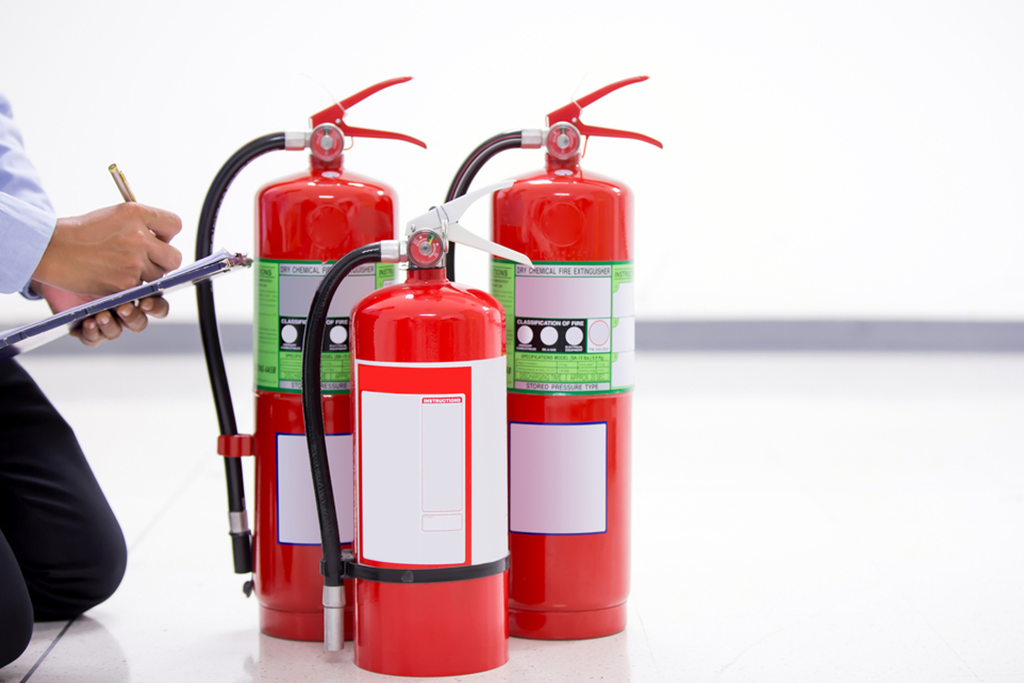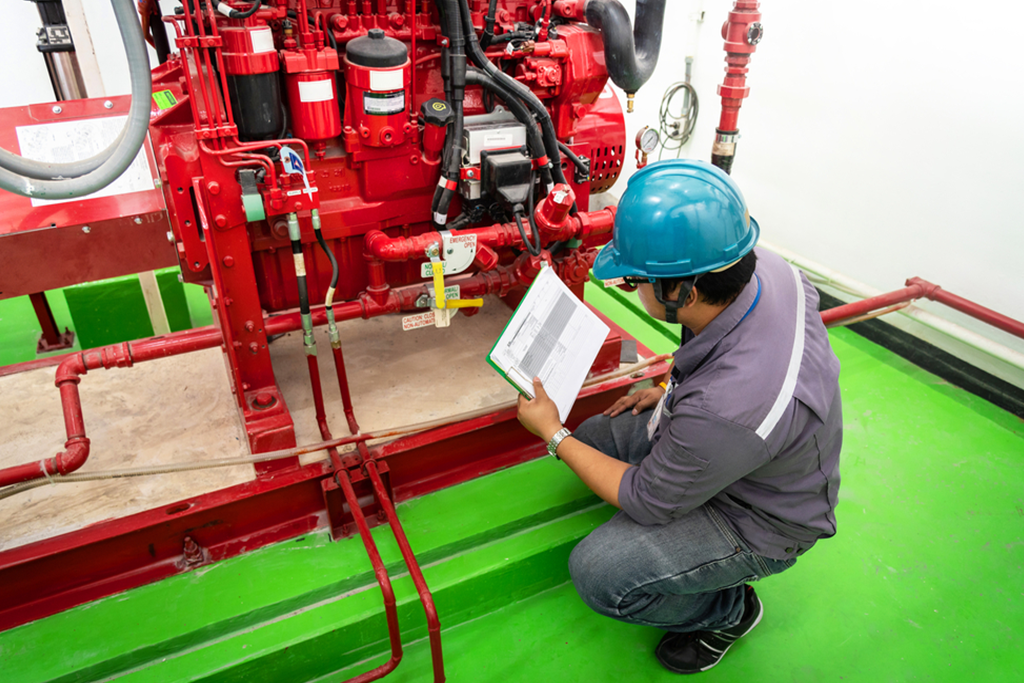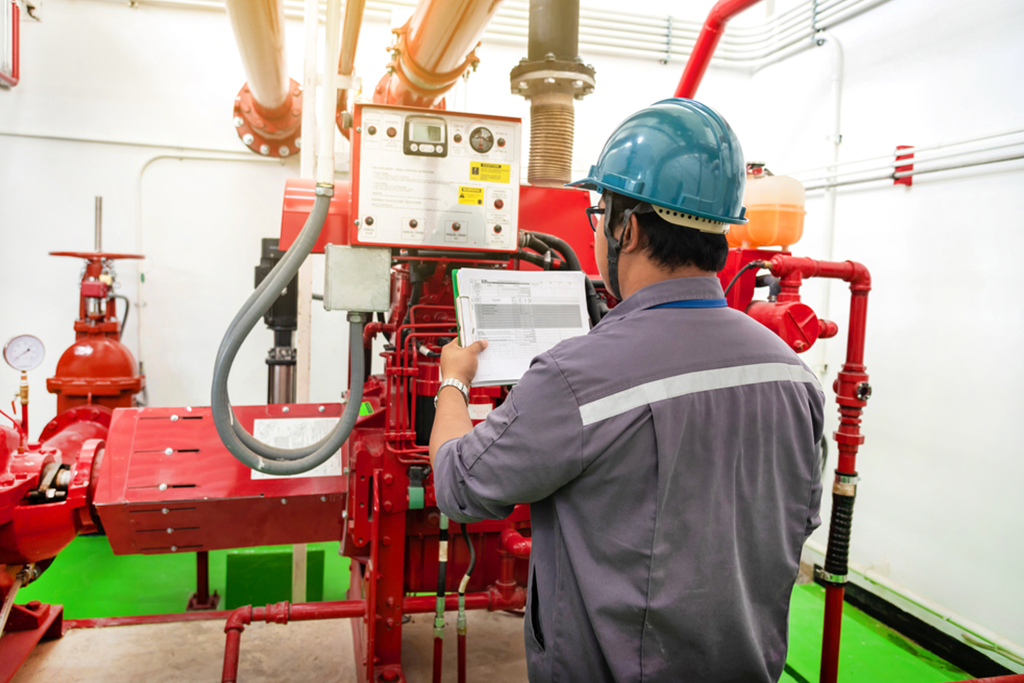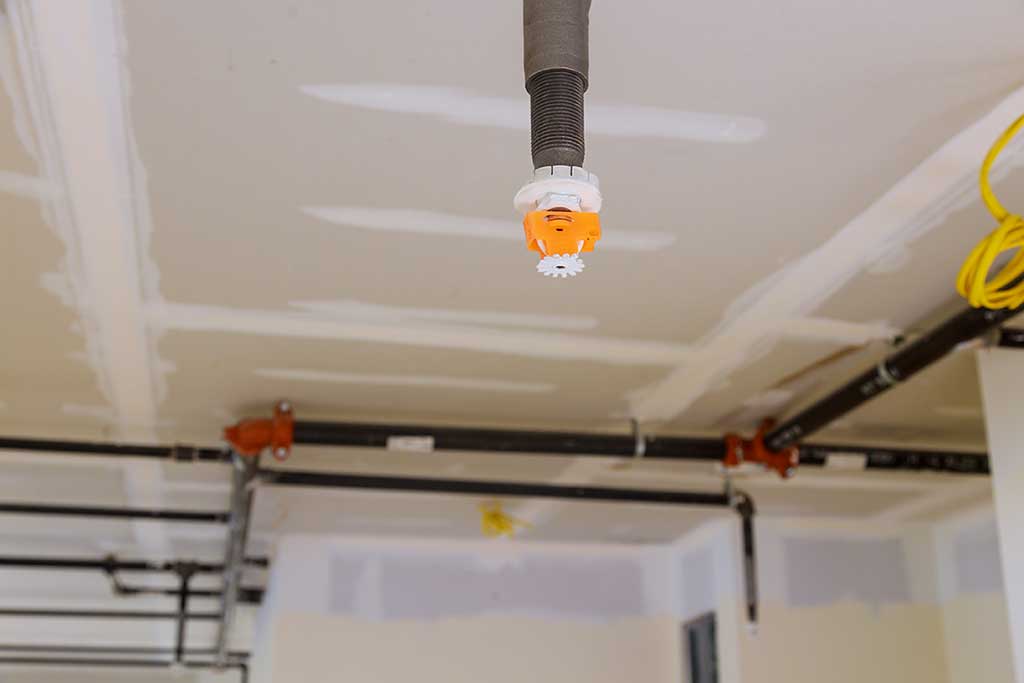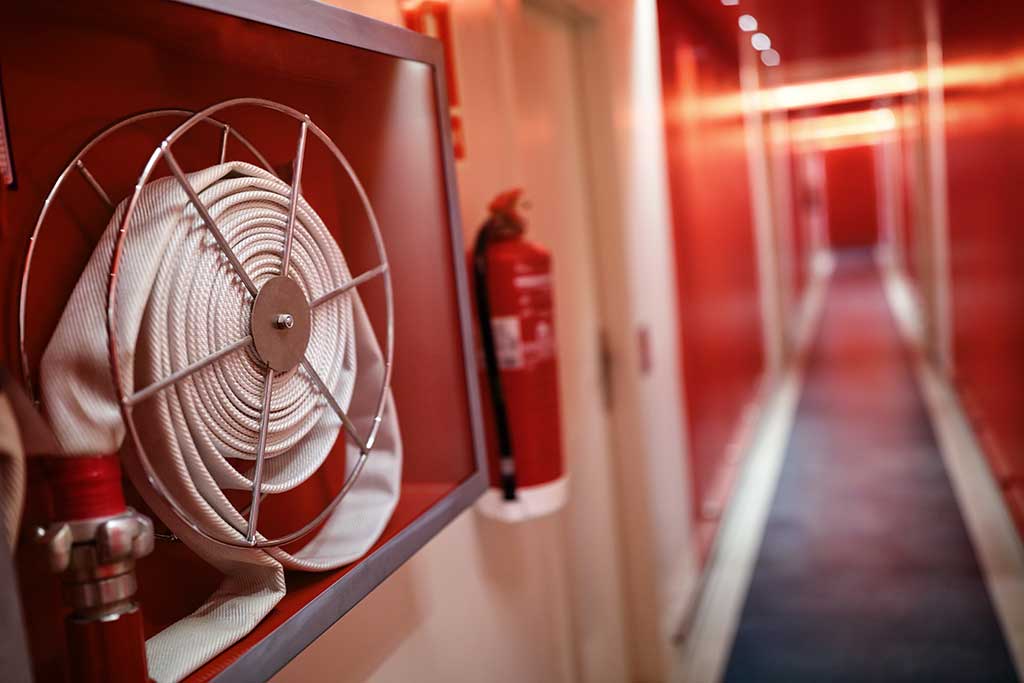In the area of modern infrastructure and construction, guaranteeing the safety and security of occupants is of major importance. One of the most important aspects of safeguarding a building and its occupants is the design and use of an effective fire protection system. A fire protection system is a complicated arrangement of technologies, equipment, and strategies designed to prevent, detect, contain, and suppress fires. Its purpose? To minimize the risk of fire-related disasters and their possibly devastating consequences. This article looks at the ins and outs of fire protection system design — from understanding the building’s purpose to incorporating cutting-edge technology — installation, ongoing maintenance, and beyond.
Importance of Designing an Effective System
The significance of designing an effective fire protection system cannot be overstated. While the hope is always to prevent fires entirely, the reality is that fires can and do happen. A well-designed system can mean the difference between a manageable incident and a catastrophic event. These systems not only protect lives but also safeguard property, investments, and businesses. Beyond this, however, designing effective fire protection systems is a moral imperative. It’s a commitment to the safety and well-being of every individual who interacts with any given building.
Understanding the Building and Its Occupants
The specifics of devising a fire protection system revolve around gaining a complete understanding of the particular attributes which apply to the structure it is supposed to safeguard. The blueprint for an effective fire protection strategy is precisely woven into the fabric of the building it serves. It is dependent upon architects, engineers, and safety experts to understand the complicated relationship between diverse variables that can potentially ignite or stop the flames of disaster. Differing structures present a vast array of fire risks. They stem from their unique combination of size, occupancy type, space arrangement, and the presence of combustible materials. From a massive residential sanctuary to a bustling manufacturing hub, every architectural creation is a collection of potential hazards – thereby calling for appropriate fire protection measures. The base, however, remains the coordinated relationship between the building itself and the multitude of people who inhabit its interior.
How the Building’s Use Affects Fire Protection System Design
The manner in which a building is utilized plays a big part in shaping the design of its fire protection system. The diverse activities occurring within distinct areas of the structure are responsible for varying degrees of fire-related risks. A great many factors — including the building’s intended purpose, operational procedures, and constituent materials — combine to contribute to the assessment of the probability of a fire occurrence.
Consider, for example, the drastic contrast between a peaceful residential dwelling and a bustling and dynamic industrial factory. The process of creating fire safety measures is a finely tuned project. A residential home necessitates the use of smoke detectors, fire extinguishing mechanisms, and unobstructed evacuation routes to guarantee the safety of its inhabitants. On the other hand, the complicated blueprint for a sprawling factory involves well thought-out strategies for fire prevention, specialized protocols for handling hazardous substances, and/or all-inclusive contingency plans to address unpredictable emergencies.
All in all, the development of fire safety systems for these unique settings involves the harmony of each environment. Fire safety experts tailor their strategies to align with the distinctive characteristics and purposes of various spaces. By synchronizing fire safety protocols with the nature of a building’s use, a plan for protection emerges to safeguard lives and property in the face of potential fire hazards.
Consideration for the Building’s Occupants
Beyond the brick and mortar, there lies a more profound consideration that helps define fire protection: the human element. Occupants, the heartbeats that breathe life into a structure, present a collection of complexities who need to be considered into the fire safety protocol. It’s not just a total assessment of numbers; it’s an intricate, complete evaluation of the very people who call the building their temporary home. Mobility becomes an important factor in this aspect of fire safety. Are there those who can trot nimbly down the stairs in an emergency, or are there those who might be hampered by their own physical limitations? The building’s design must cater to these considerations, guaranteeing that pathways are unobstructed, and refuge areas are strategically positioned. The occupants’ familiarity with the building’s layout is yet another consideration. An encounter with fire is relentless and chaotic. But knowing the steps to navigate the situation can mean the difference between life and despair. So, a fire protection strategy must consider and accommodate all of the above. It must empower each individual to find and navigate the path of safety with security and speed.
Fundamental Principles of Fire Protection Systems
At the core of any fire protection system are three fundamental principles: fire detection, fire suppression, and fire alarms.
Fire Detection: Early detection is critical for preventing fires from spreading uncontrollably. Various types of fire detectors are employed depending on the environment and potential ignition sources. Smoke detectors, heat detectors, flame detectors, and gas detectors are examples of these important devices. Smoke detectors, for instance, are commonly used in residential and commercial spaces. Flame detectors, on the other hand, are critical in industrial settings where flames may be obscured by various elements.
Fire Suppression: Fire suppression systems are designed to control or extinguish fires once they have ignited. These systems involve a range of technologies, including sprinklers, clean agent systems, foam systems, and water mist systems. Sprinkler systems are perhaps the most well-known and widely used. They deploy water when a particular temperature is reached, effectively dousing flames and cooling the surrounding area to prevent re-ignition.
Fire Alarms: Fire alarms are the communication backbone of fire protection systems. These alarms notify occupants and emergency responders when a fire is detected. They enable quick and coordinated responses. Modern fire alarms are equipped with advanced features like voice evacuation systems. These provide clear and specific instructions to occupants, improving their safety during an emergency.
Standards and Codes in Fire Protection System Design
In the intricate area of fire protection system design, a complicated collection of standards and codes are combined to assure not only consistency but also effectiveness. These safeguards are critical to protect lives, preserve property, and guard the structural integrity of buildings in the face of possible fire emergencies. At the heart of this system lie two critical organizations whose influence is undeniable: The National Fire Protection Association (NFPA) and the International Code Council (ICC). Their tireless efforts contribute to the development and perpetual refinement of strict standards that govern the design, installation, and the constant maintenance of fire protection systems.
Role of NFPA and International Code Council (ICC) Standards
Fire protection engineering is interlaced with the vital aspects created by the NFPA and the ICC. These organizations — each a shield of commitment to fire safety — contribute greatly to shaping the fire protection system design. The NFPA, a venerable institution, shines as a picture of reliability, its standards often considered the base upon which fire protection strategies are built. Through extensive research, collaboration, and much-reviewed processes, the NFPA makes and enforces standards that embody the collection of wisdom of experts from far and wide.
The ICC stands as a sentinel guarding against vulnerabilities in the building’s environment. Its standards are applied across international boundaries. The ICC’s edicts, carefully refined and multi-faceted, are guidelines that include architectural designs, fire containment mechanisms, emergency egress routes, and the integration of advanced technologies into fire safety paradigms. These standards, like the ICC itself, possess a worldwide perspective. They underscore the urgency of fire protection on a global scale.
Understanding Local Fire Codes
While the NFPA and ICC standards serve as complete cornerstones of fire protection, the realization of fire safety is further woven by the threads of local fire codes. These codes are the relationship between standards and region-specific demands and play an undeniable part in safeguarding communities. Crafted by local authorities who have a personal understanding of regional dynamics, these codes are tangible solutions that account for any number of factors.
Precisely created, local fire codes account for regional climate characteristics, existing building materials, and the limitations of emergency response capabilities. These codes do not simply dictate the letter of the law. They combine knowledge with the pulse of local communities. They help guarantee that fire protection strategies are adaptive, cohesive, and imbued with the spirit of resilience. Through their all-encompassing approach, local fire codes serve as the bridge between broad standards and the complexities that define the local fire safety landscape.
Incorporating Technology in Fire Protection Systems
Advancements in technology have revolutionized the field of fire protection. They have provided for the creation of more efficient and precise systems. Modern technology not only improves the reliability of fire protection systems but also heightens their ability to adapt to different situations.
Role of Modern Technology in Enhancing Fire Protection
Sophisticated sensors and detectors, for instance, can tell the difference between actual fires and false alarms. This reduces unnecessary disruptions. Intelligent fire suppression systems use AI algorithms to optimize the distribution of suppression agents. This increases their effectiveness while minimizing damage to property. What’s more, integrated building management systems allow for centralized monitoring and control of fire protection systems. That means quicker responses and more informed decisions.
Examples of Innovative Fire Protection Technologies
- Video Smoke Detection: This technology uses video cameras to analyze patterns of smoke and detect fires in their beginning stages. It’s particularly useful in large open spaces where routine smoke detectors might not be as effective.
- Water Mist Systems: These systems use fine water droplets to quell fires. The small droplets create a large surface area. This makes for effective cooling and suppression while using less water than more basic sprinkler systems.
- Advanced Fire Extinguishers: New types of fire extinguishers use innovative agents that can extinguish fires more rapidly and with less damage to property. Some agents can even be safely used in sensitive environments like data centers.
- Emergency Communication Systems: These systems incorporate features like text alerts and exit route indicators. They help occupants navigate to safety even in complex building layouts.
Implementation of the Fire Protection System
After the design phase, the next stage of implementation begins – bridging the gap between concept and reality with precision and care.
Professional Installation and Testing
The importance of the professional installation of fire protection systems cannot be overstated. Every component finds its rightful place under the skilled hands of experts. This helps to provide optimal positioning, precise calibration, and flawless integration. This involved process is enhanced by thorough testing and a battery of quality assurance checks. They are meticulously executed to assure the system’s functionality and increase its reliability.
Coordinating With Local Fire Departments
In this combination of safety techniques, collaboration with local fire departments exists as another cornerstone of effective use. For firefighters to perform their lifesaving duties with confidence, a close relationship with the building’s layout and a complete grasp of the fire protection systems’ operation are imperative. So, a program of regular training sessions and walkthroughs with fire department personnel becomes the basis for creating not only familiarity but also an effective response to emergencies. Through this harmonious partnership, the symphony of preparedness plays on, resonating with the shared goal of safeguarding lives and property.
Ongoing Maintenance and System Updates
Designing and installing a fire protection system is not a one-time endeavor.
Importance of Regular Inspections and Maintenance
To guarantee its continued effectiveness, regular maintenance is important. Routine inspections, testing, and servicing of components are necessary to identify and address prospective issues before they escalate. Fire protection systems should be checked against the original design specifications and any problems corrected promptly.
Updating the System As Necessary to Stay Compliant and Effective
As technology evolves and building usage changes, the fire protection system should be periodically updated to comply with current best practices and standards. This might involve replacing outdated equipment, installing new technologies, or altering the system to accommodate changes in the building’s layout.
Ensuring Comprehensive Fire Protection Assistance
On the topic of commercial spaces, fire protection is a multi-faceted undertaking that goes beyond simply meeting legal requirements. It’s about cultivating a safe environment, protecting assets, and guaranteeing business continuity. This all-inclusive approach involves understanding fire hazards, using preventive measures, adhering to standards, training personnel, and maintaining systems.
ASCO Fire is your trusted partner in comprehensive fire safety solutions. Our services encompass the planning and installation of fire sprinkler and fire alarm systems for diverse establishments – from businesses and factories to educational institutions. We provide meticulous examinations, upkeep, assessments, and repairs for all fire safety mechanisms and equipment. Our expertise extends to the installation of portable fire extinguishers and the resolution of fire code violations. What’s more, we offer expert consultations on fire code matters to ensure compliance and safety.
For inquiries and assistance, reach out to us at 973-633-7300 or conveniently use our online contact form. Remember, effective fire protection is more than a legal obligation—it’s a commitment to the well-being of all who step foot on commercial premises. By partnering with ASCO Fire, you’re investing in a safer future for everyone.
